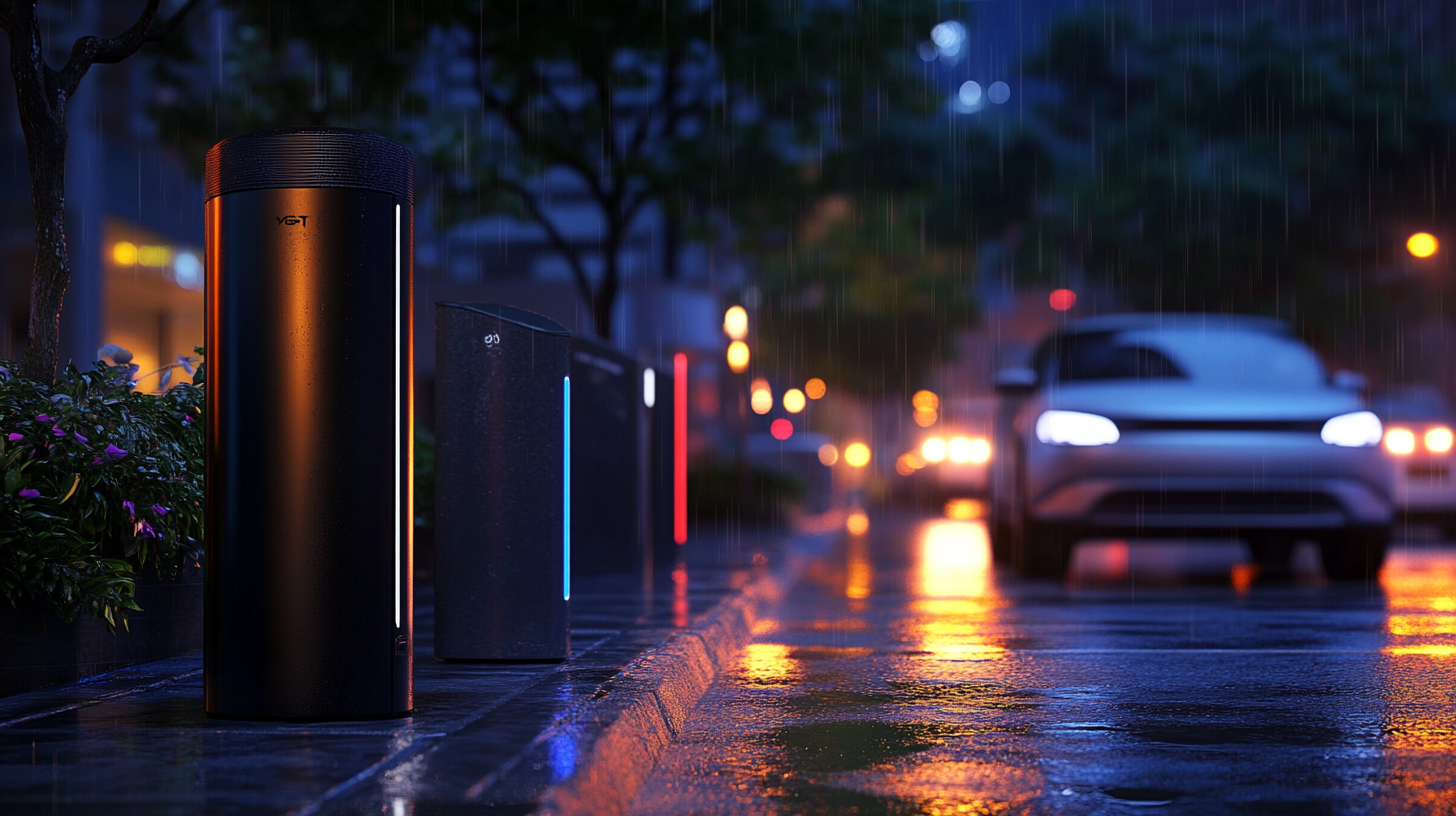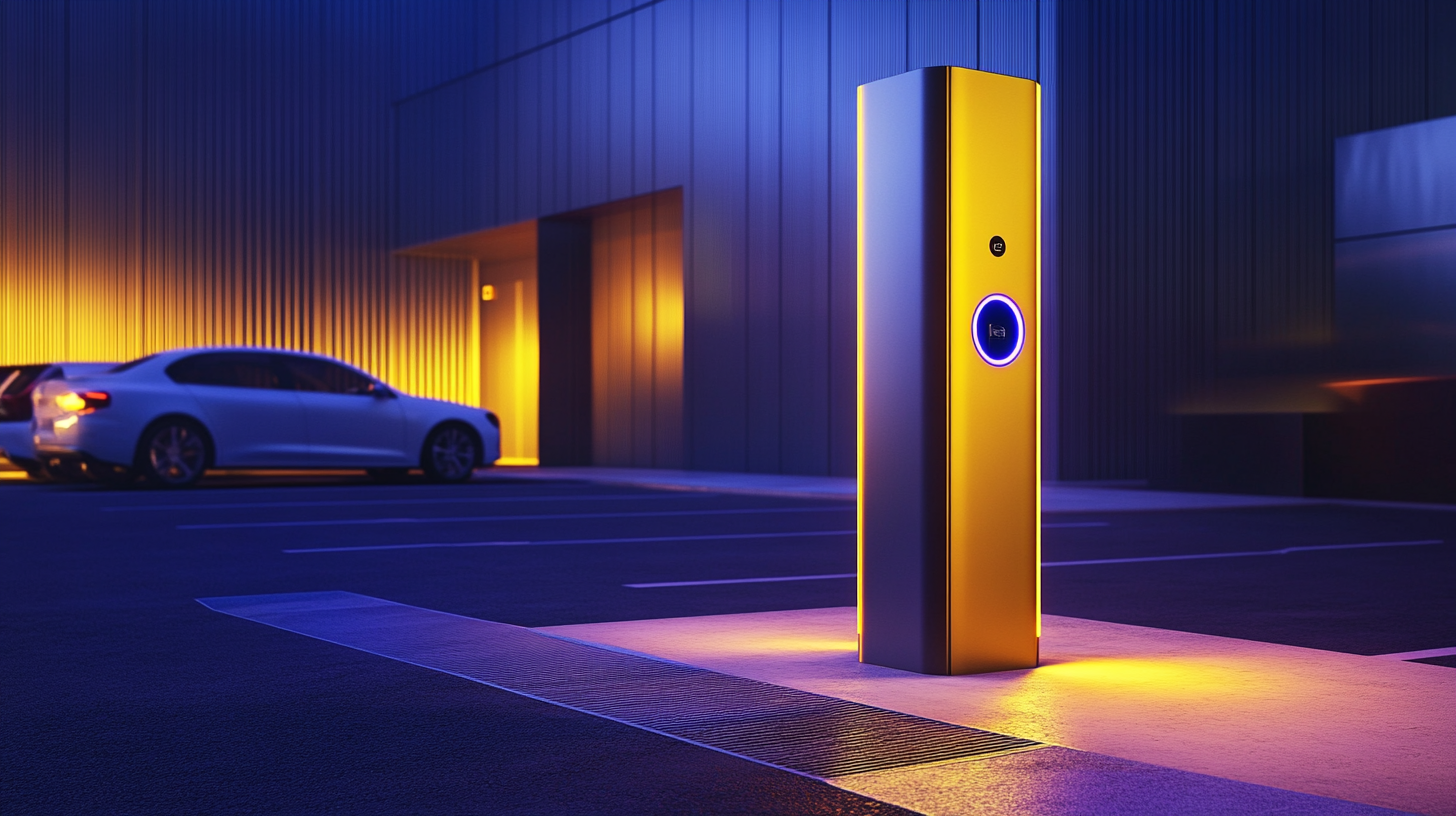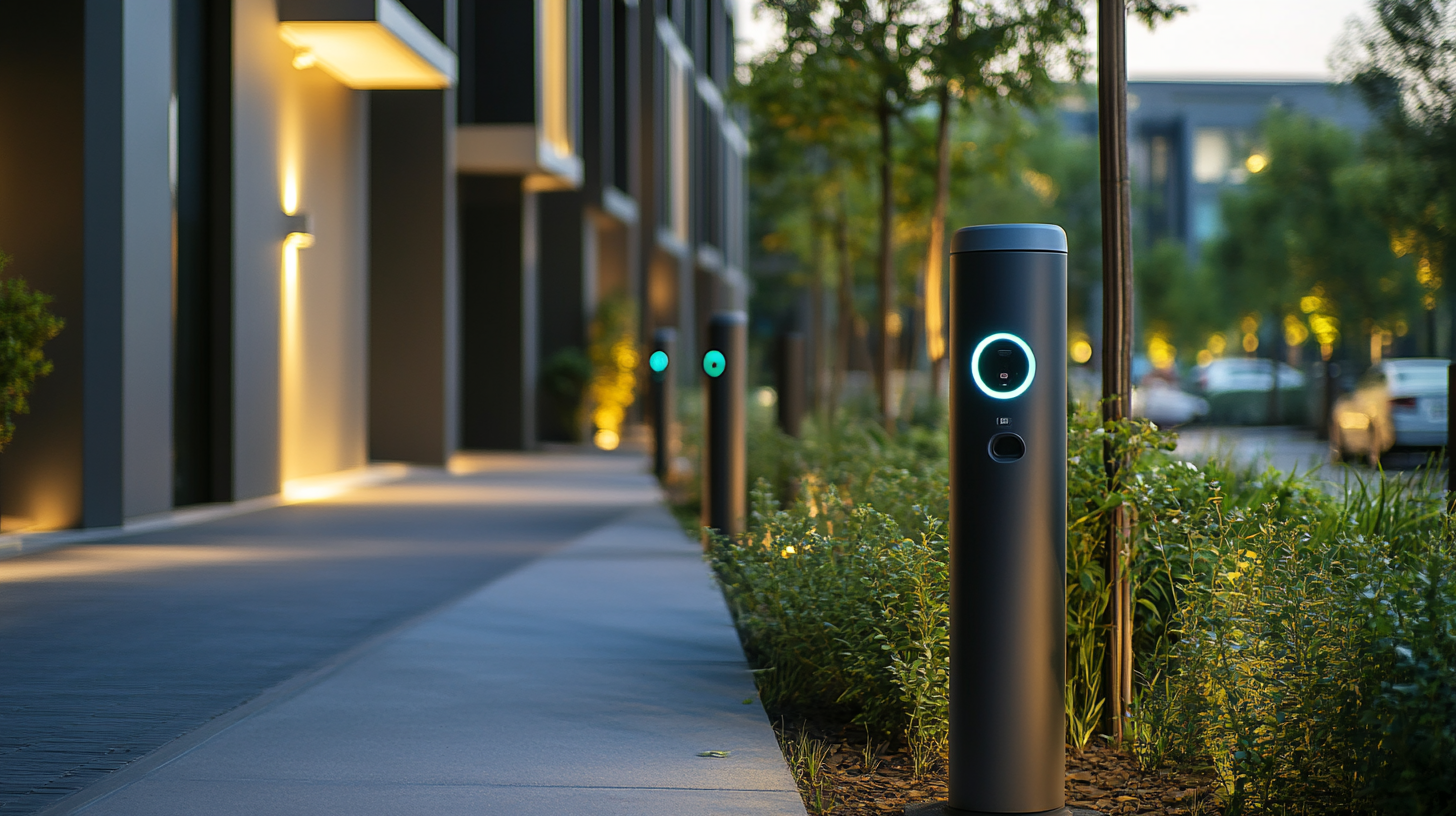Innovative Options for 7kW Illuminated Bollard Chargers You Should Explore
The demand for innovative electric vehicle charging solutions has consequently surged dramatically as the world shifts into sustainable energy sources. Among these more modern tendencies of charging, the **7kW illuminated bollard charger** remains one feasible, functional, and aesthetically pleasing possibility likely to be found in a variety of environments. The chargers provide electrical energy for electric vehicles while also concurrently working to light up the surroundings in the interest of safety and visibility in publicly utilized areas. This blog thus examines some of the various advantages and versatile uses of the 7kW illuminated bollard charger, emphasizing their role as an important part of modern infrastructure.
Installing **7kW illuminated bollard chargers** in urban landscapes and commercial properties not only responds to the demand for EV charging but provides an opportunity for added design and functionality. With their sleek and modern design, these chargers fit right in with all kinds of environments, making them aesthetically pleasing additions to parking lots, parks, and passageways. This post will discuss forward-thinking concepts and thought-provoking case studies that illustrate how illuminated bollard chargers can rehabilitate public and private spaces with sustainable practices.

Exploring the Benefits of 7kW Illuminated Bollard Chargers for Urban Spaces
With more drivers shifting to electric vehicles (EVs), urban areas have seen a sudden demand for efficient and attractive charging solutions. One possible design under consideration is the 7kW illuminated bollard charger. These chargers deliver fast and reliable EV power while beautifying and functionally contributing to the public realm - making them suitable for cityscapes. The most beneficial aspect of these 7kW illuminated bollard chargers is the duality of their use. Besides acting as charging stations, they light up the pathway so pedestrians can see it and be safe at night. Such a creative design can set off a transformation of parking lots, parks, and street corners into lively, beautiful spaces, encouraging a greater number of people to electrify while conveniently charging in familiar settings. Because of their installations in the urban design, these chargers invite sustainable armies. They can be installed in foot-colonizer places to invite EVs in return for carbon emissions to the environment. These chargers can work with urban planners in the municipalities toward their green city solutions but will also cater to increasing demand for EV infrastructure. Bright illumination improves visibility and gives a city lifestyle; it's a win-win for the urbanites and the environment.

Innovative Design Features of Modern Bollard Chargers You Can't Miss
The product design ofbollard charger is getting fancier as the market expands. This innovation has seen the bollest Thai's visibility considerably while attracting a sleek-looking design altogether. Modern 7KW illuminated bollard chargers proliferate a power hook-up while incorporating several features for heightened security, ease of accessibility, and interaction. The said illumination feature works priamrily to make it visible to the user during nighttime charging and also signal the operational status of the charger thus reducing the chance of an accident in crowded urban surroundings. The push toward the adoption of EVs is commencing others to demand more dynamic and feasible charging solutions and thus is causing the activation for the form of well-built design for special purpose.
In the real-time scenario, modern-day fitters have smart monitoring and management capabilities, allowing them to connect the charger, remotely manage it, and monitor it regularly. If they opt for smart charging, sweeping transactions can be made automatically; there is no manual intervention with anything, as some impeccable smart solutions that pose great benefits in our entire EV process. One of the reports from the EV Charging Infrastructure Advisory Group explains that the majority of municipalities and organizations can save between 25%-30% in energy costs with demand management from smart EV charging solutions giving them a real possibility to be impressed by environmental innovation.
Along with a higher degree of modularity and sustainability, the contemporary looks would be formed with regards to customizations. And, there is an option to include the resources while in the earthly disposal. Some manufacturers have been going in for the recycling of material and design concepts with the addition of the solar panel. TerraView promotes a balance where any interface turns off very sharply the CO2 content of EV operations in response to global objectives pertaining to the reduction in greenhouse gases. Many pairs and symmetry will therefore set the design criteria for bollard chargers with high-purpose functions in view of that future of the world.

Comparative Analysis: Bollard Chargers vs. Traditional Charging Stations
Lately, the dichotomy of the chalk-and-cheese electric vehicle charges at this juncture is traditional charging stations versus illuminated bollard chargers. The contemporary and streamlined ideology of the illuminated bollard chargers makes them aesthetically appealing to the brightened environment. These do not just satisfy the need for charging but also beautify the streets. The illumination aspect increases safety by lighting pathways during evening hours making them multi-purpose investment for municipalities and private developers.
On the contrary, standard charging stations normally feature huge footprints and tend to be more overtly industrial in appearance. Although it has proven that they are effective in providing low resistance in amps of high kilowatt hours, charging times can essentially be reduced. Simply put, a charge station does not fit well into its surroundings like an illuminated bollard. This may become seriouslyconsidered in residential areas or spots where aesthetics top the list, as an unsightly charging station can easily become a sore spot in the landscape.
More so, installation and maintenance of bollard chargers are much more easier, since they can be installed along pathways and parking lots with no major infrastructural alteration, which will help reduce installation costs. Traditional charging stations, on the other hand, are liable to entail complex electrical integrations and place demands on larger space requirements, thus rendering them less flexible in certain inhabitable arrangements. Therefore, upon a comparative analysis, the brightly illuminated bollard chargers seem to emerge as avant-garde alternative options that address the charge and beauty needs of the infrastructure EU.

Sustainability in Design: Eco-Friendly Materials for Illuminated Bollards
Illuminated bollard chargers are gradually becoming very popular among sustainable designers due to their utility and their eco-friendliness. These devices are great for charging electric vehicles and, at the same time, serve as visual guides in busy public spaces while promoting sustainable living. The manufacturer's use of natural materials will satisfy concerns about the environment and it will also maximize aesthetic appeal. For example, using recycled materials or the others reduces waste outputs and further minimizes the carbon footprint associated with the new components.
The other exciting element of the sustainable design in illuminated bollard chargers is that of integrating energy-efficient lighting. LED technology was taken on board because it promises much-reduced energy consumption in comparison to traditional lighting solutions. Considering the long life that LED lights have, it will also mean fewer replacements and therefore lower waste. Furthermore, integrating solar panels into designs of such bollards would make them capable of harnessing renewable energy, charging electric vehicles with solar power, and making those installations real green solutions.
Keep a little environment friendly, and this paint or finish for these bollards can be made using highly engineered low-VOC paints or coatings, thus also ensuring safety for users as much as for the environment. Such precision in the selection of materials manifests a growing trend in eventuality towards clean and proper environmental futures. Now that green infrastructure is gaining momentum in cities, bright ideas behind illuminated charging station bollards would be antitheses of the smarter, greener urban futures.
Future Trends: The Evolution of Charging Technology in Public Infrastructure
Indeed, the development of charging technology in public infrastructure will change the face of cities worldwide as their adoption of electric vehicles continues to grow. Perhaps one of the most wow-inducing innovations in this space is illuminated bollard chargers, which are stylish as well as functional elements that raise the aesthetic quality of public spaces while also adding convenience and accessibility to the EV experience. As cities evolve to allow more electric vehicles, illuminated bollard chargers will undoubtedly serve as a beacon toward sustainable mobility, advocating greener methods of transportation.
Integrated into the other functions of the city, and the concept of smart cities, lies the future of charging technology. Advances in wireless charging technology and smart grid will allow for multifunctional installations that do not serve only the purpose of charging. For example, sensors can be embedded within the bollard charger to record traffic flow, atmospheric conditions, and power usage-all of which will feed rich data for city planners' decision making. Besides, it will also allow them to be complemented by renewable energy sources, e.g., solar panels, which run independent of the grid.
The future looks bright, for example, opportunities for municipalities to invest in 7kW illuminated bollard chargers. Here is a very different interpretation of electrification, one that speaks not just of filling up cars but transforms the very essence of public space- active and dynamic- into a connected model of meaning and interaction. Consider these technologies, which will improve the user experience for people charging their EV while also helping society become more resilient toward a sustainable future. Charging infrastructure could, with well-considered designs and clever solutions, actually become integral building blocks in our cities of the future.





